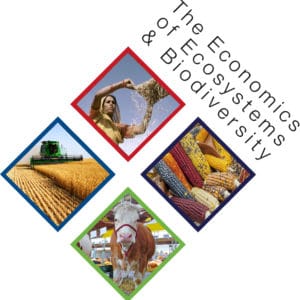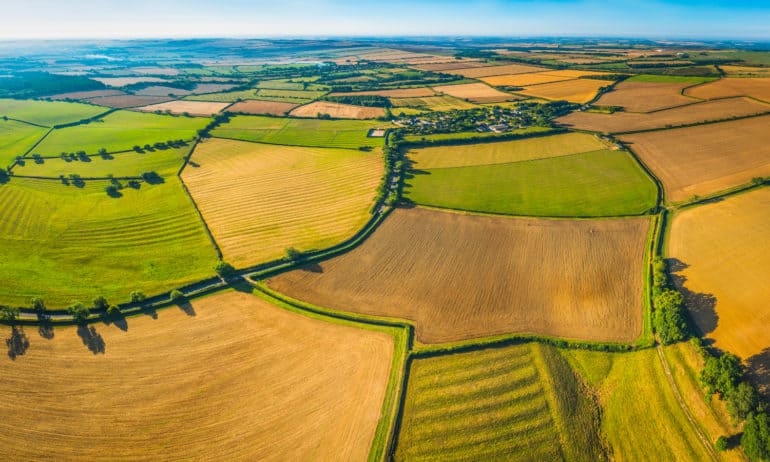Dr. Anil Markandya is a resource economist and was named one of the top 50 contributors to thinking about sustainability in the world by Cambridge University. He is a chapter author of the new Economics of Ecosystems and Biodiversity for Agriculture and Food (TEEBAgriFood) report on how to evaluate our agriculture and food systems while considering a range of social, human, and environmental dimensions across the value chain.

Markandya is a lead author for the International Panel on Climate Change Assessment Reports (IPCC) and served as the Executive Director of the Basque Centre for Climate Change. Markandya was elected as the President of the European Association of Environmental & Resource Economists (EAERE) and served in that capacity from 2014-2015. He has also worked as a Lead Advisor on Energy and Environmental Issues for the World Bank. He is currently working on a number of climate related projects, including one to develop Bottom-Up Climate Adaptation Strategies Towards a Sustainable Europe.
Food Tank talked with Dr. Anil Markandya about TEEBAgrifood’s evaluation and valuation methods and tools.
Food Tank (FT): What is the most interesting thing you learned from working with TEEBAgriFood?
Anil Markandya (AM): I learned that there is a vast amount of research and policy material covering the various ways the eco-agri-food sector impacts the environment, society, and different sectors of the economy. Although these diverse approaches may not view things through the same lens, they have something to learn from each other. Together they can contribute to a better understanding of how we can organize and improve our eco-agri-food system.
FT: What is the most significant unintended consequence of our current food system that policymakers, funders, and donors ignore?
AM: In some countries, it is the impacts on the environment or the degradation of supporting ecosystems and the loss of future productivity. In others, it is a lack of awareness of how connected the system is and how decisions along the value chain can influence food products and impact human health. No single consequence is always the most significant in all circumstances.
FT: What are the advantages of looking at our eco-agri-food system in its entirety—the systems approach—instead of deconstructing it to focus on specific issues?
AM: Systems thinking allows us to see linkages that would otherwise go unseen. It allows researchers to account for feedback loops and temporal and spatial impacts in the widest sense. Of course, this comes at a cost. You cannot always get the same depth in the analysis as you can when studying a single sector or product, but the two approaches can complement each other.
FT: What challenges did you face when developing a method to evaluate the impacts our food systems have on the environment and human well-being?
AM: There were some difficulties getting data on the comprehensive costs and benefits of different activities to the eco-agri-food sector. Coverage is not systematic and complete, so we sometimes must make inferences from an incomplete picture. In addition, we had difficulty convincing some of our colleagues of the merits of placing a monetary value on impacts. To be sure, these values do not cover all the linkages between eco-agri-food, the environment, society, and the economy, but they provide important guidance that would be a mistake to ignore.
FT: How did you evaluate the accuracy of the TEEBAgriFood methodologies?
AM: The methodologies are, as always, in a state of development and improvement. As they stand, they can provide useful guidance with varying degrees of accuracy for different impacts. In some cases, it is important to improve the accuracy. In others, even with uncertainty about the exact numbers, we know enough to be able to formulate effective policies and measures.
FT: How can policymakers use the TEEBAgriFood report?
AM: It is unlikely many will read the report from cover to cover. With a useful index and guide to the contents, policymakers will find valuable information for specific questions, such as: How much is the environment impacted by different methods of production, distribution, and consumption? Or how can one better track the social and economic consequences of changes in practices in specific areas?
FT: What do you want people to know most about the TEEBAgriFood report?
AM: I want people to know that this study looks at the complex connections between the ways we organize and produce our food, and the implications for the environment, human health, and social wellbeing. Complexity does not mean that the outcomes are unclear—they can be brought out through a presentation of the linkages that is easy to comprehend.
Click HERE to download the TEEBAgriFood report!
 The goal of TEEB AgriFood is to more comprehensively determine the costs, benefits, and dependencies of agriculture and food production. What makes some produce less expensive in most supermarkets is in part the use of cheap—often subsidized—fertilizers and pesticides, but that retail price does not take into account hidden costs like environmental damage from runoff or human impacts on health and livelihood. Conversely, these prices do not recognize the positive benefits created by more sustainable forms of agriculture. To ensure the sustainability of agriculture and food systems, an important step is to account for the side effects, or externalities, through market mechanisms. TEEBAgriFood is creating a framework for looking at all the impacts of the ‘eco-agri-food’ value chain, from farm to fork to disposal, including effects on livelihoods, the environment, and health. This can help farmers, decision makers, and businesses more explicitly look at the impacts of different practices and policies.
The goal of TEEB AgriFood is to more comprehensively determine the costs, benefits, and dependencies of agriculture and food production. What makes some produce less expensive in most supermarkets is in part the use of cheap—often subsidized—fertilizers and pesticides, but that retail price does not take into account hidden costs like environmental damage from runoff or human impacts on health and livelihood. Conversely, these prices do not recognize the positive benefits created by more sustainable forms of agriculture. To ensure the sustainability of agriculture and food systems, an important step is to account for the side effects, or externalities, through market mechanisms. TEEBAgriFood is creating a framework for looking at all the impacts of the ‘eco-agri-food’ value chain, from farm to fork to disposal, including effects on livelihoods, the environment, and health. This can help farmers, decision makers, and businesses more explicitly look at the impacts of different practices and policies.













